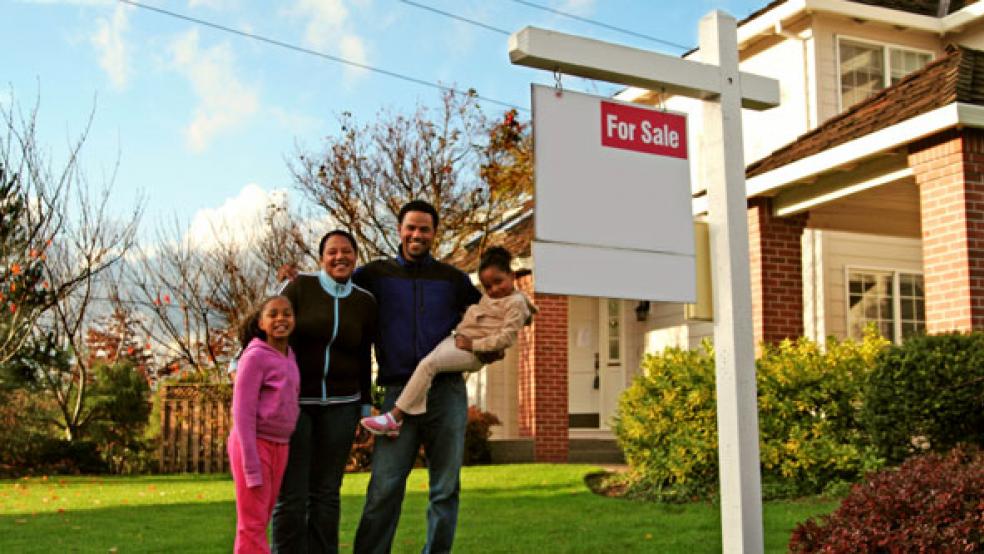Is the government engaged in redlining? Dick Bove, long-time bank analyst now at Rafferty Capital Markets, charges that the Obama administration, in its efforts to prevent another financial crisis, has inadvertently pushed banks to deny credit to minorities in low-income neighborhoods. In the old days, you could be sued for that.

This incendiary reading of the current state of the mortgage market is not unreasonable. The Consumer Financial Protection Bureau has recently issued new regulations designed to protect Americans from themselves, and the country from another housing bust. The rules define what constitutes “affordability” for a “qualified” mortgage. The affordability test demands that a borrower’s total debt payments not exceed 43 percent of income.
Other rules eliminate exotic no-interest and reverse-amortization loans. “Qualified” mortgages are attractive for banks because they can be sold off in their entirety to bundlers without the originator retaining a residual interest (“skin in the game”). Also, banks making “qualified” loans are protected against lawsuits by those who get in over their heads.
In reviewing the new regulations, The New York Times was alarmed that banks received such legal protections, but pleased that banks received fewer safeguards on loans made to subprime applicants than they did in lending to so-called “prime” borrowers. Credit-challenged borrowers would be able to take their lender to court without much difficulty; and subprime borrowers would be able to give a judge “oral evidence.” That is, they could argue in person that the “bank made them do it.” (That’s my interpretation -- not The Times.)
In an accompanying editorial, The Times celebrates the new rules, which they say will “help protect home buyers and the global financial system from a repeat of the subprime disaster.” However, they are alarmed that the 43 percent limit may not be protective enough. They point out that such a standard is probably sufficient for a family with $100,000 in income; but a family earning only $50,000 might be hard pressed to shell out 43 percent of their income and still put food on the table. They would like to see the standards tightened.
Note that, as is so often the case with those who think the government knows best, The Times never suggests that the borrower is responsible for, or capable of, assessing his (or her) own finances.
As usual when the government intrudes into markets, it is behind the curve. Bankers didn’t much resist the new lending rules, because they have already ratcheted up their own guidelines. Lawrence Yun, Chief Economist for the National Association of Realtors, said at a press conference last fall that it is restrictive loan standards – which now exceed Fannie and Freddie guidelines -- that have retarded the rebound in home sales, not excessive interest rates.
In a speech last November, Fed Chief Ben Bernanke said that the “extension of first-lien mortgages to purchase homes fell by more than half from 2006 to 2011 and now stands at the lowest level since 1995.” Cautious banks have especially cut back lending to those with low credit scores. According to Bernanke, “the contraction in mortgage originations has been particularly severe for minority groups and those with lower incomes: Since the peak in mortgage lending in 2006, the number of home-purchase loans extended to African Americans and Hispanics has fallen more than 65 percent, whereas lending to non-Hispanic whites has fallen less than 50 percent. Home-purchase originations in lower-income neighborhoods have fallen about 75 percent, compared with around 50 percent for middle- and upper-income neighborhoods.”
Bernanke points out that myriad factors have dampened demand for housing, including unemployment and uncertainty about the economy, but he also cites tightened credit as culpable.
Uncle Sam has encouraged expanded home ownership among minorities and low-income Americans since 1968 when the Housing and Urban Development Act authorized subsidized mortgages for low-income homebuyers for the first time. Now, policies aimed at protecting such borrowers are threatening to undo solid progress in this arena. To quote Bernanke again, “most or all of the hard-won gains in homeownership made by low-income and minority communities in the past 15 years or so have been reversed….Data from the Census Bureau show that, over the period from 2004 to 2012, the homeownership rate fell about 5 percentage points for African Americans, compared with about 2 percentage points for other groups.” All this while the Federal Reserve is spending $40 billion a month to keep mortgage rates low and affordable. Nothing is affordable if credit is out of reach.
Though bankers are understandably eager to avoid further mortgage losses, and therefore unlikely to open the lending floodgates anytime soon to low-credit applicants, creating greater legal vulnerability for doing so is making things worse, not better. Consumer advocates should ask themselves: Will banks be more or less likely to lend to groups that can easily sue them? Will they make loans that require higher capital backing (if they must retain a portion of the loan) or choose those which need no capital and therefore promise greater returns?
The greatest irony is this: CFPB policies will guarantee that it will be the well-to-do who benefit from an expected snap-back in home prices. The NAR’s Yun said new, tighter mortgage rules are “limiting who can become home owners and setting the stage for possible highly unequal wealth distribution in five years” – an outcome he described as an “unwelcome social development.” I would say so.






